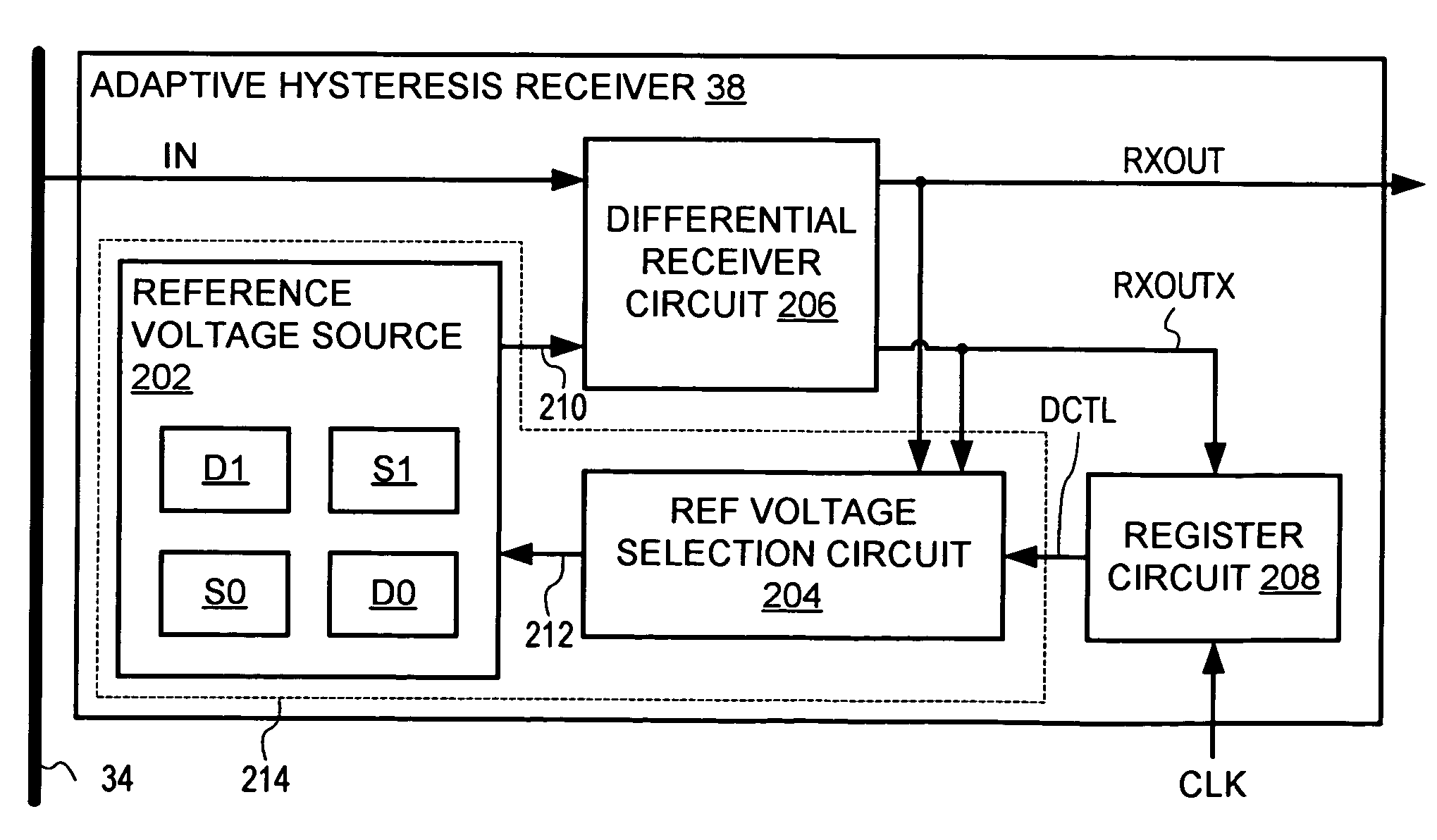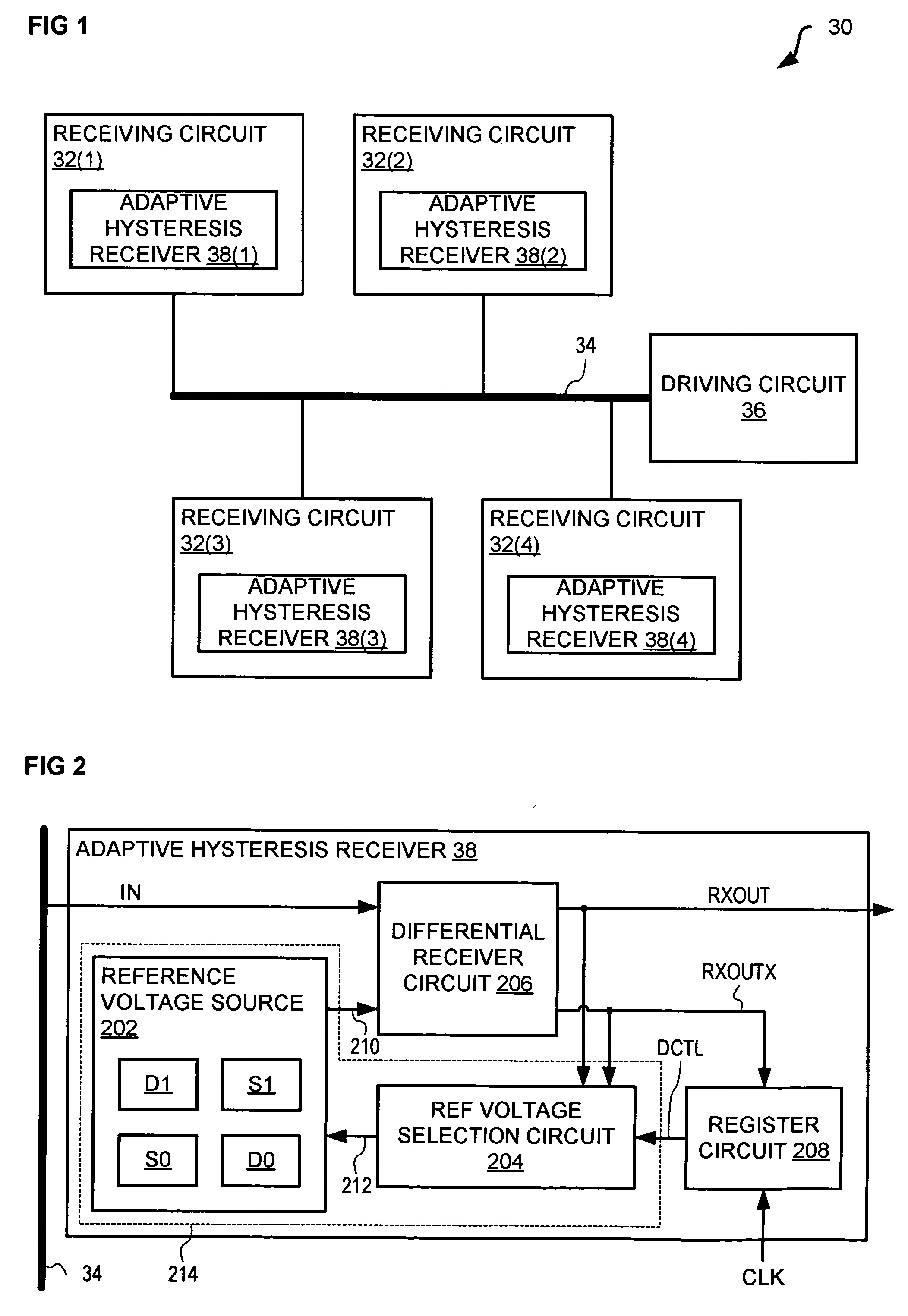Adaptive hysteresis receiver for a high speed digital signal
- Summary
- Abstract
- Description
- Claims
- Application Information
AI Technical Summary
Benefits of technology
Problems solved by technology
Method used
Image
Examples
Example
DETAILED DESCRIPTION OF THE FIGURES
[0030]FIG. 1 illustrates an exemplary embodiment of one system 30 that has four receiving circuits 32 connected to a single bus 34 driven by a driving circuit 36. Each receiving circuit 32 has at least one adaptive hysteresis receiver 38, such as shown. More or fewer receiving circuits 32 and adaptive hysteresis receivers 38 may exist depending upon the desired application.
[0031] In operation, driving circuit 36 generates high speed digital signals on bus 34. These high speed digital signals may have varying amounts of noise (e.g., unwanted signals) at different positions on bus 34. Each adaptive hysteresis receiver 38 receives one of the high speed digital signals of bus 34, and operates to ignore noise for that one signal. Accordingly, although not shown, each receiving circuit 32 may have a plurality of adaptive hysteresis receivers 38 so that receiving circuit 32 can receive multiple noise-free signals from bus 34.
[0032] Bus 34 may represent...
PUM
 Login to View More
Login to View More Abstract
Description
Claims
Application Information
 Login to View More
Login to View More - R&D
- Intellectual Property
- Life Sciences
- Materials
- Tech Scout
- Unparalleled Data Quality
- Higher Quality Content
- 60% Fewer Hallucinations
Browse by: Latest US Patents, China's latest patents, Technical Efficacy Thesaurus, Application Domain, Technology Topic, Popular Technical Reports.
© 2025 PatSnap. All rights reserved.Legal|Privacy policy|Modern Slavery Act Transparency Statement|Sitemap|About US| Contact US: help@patsnap.com



